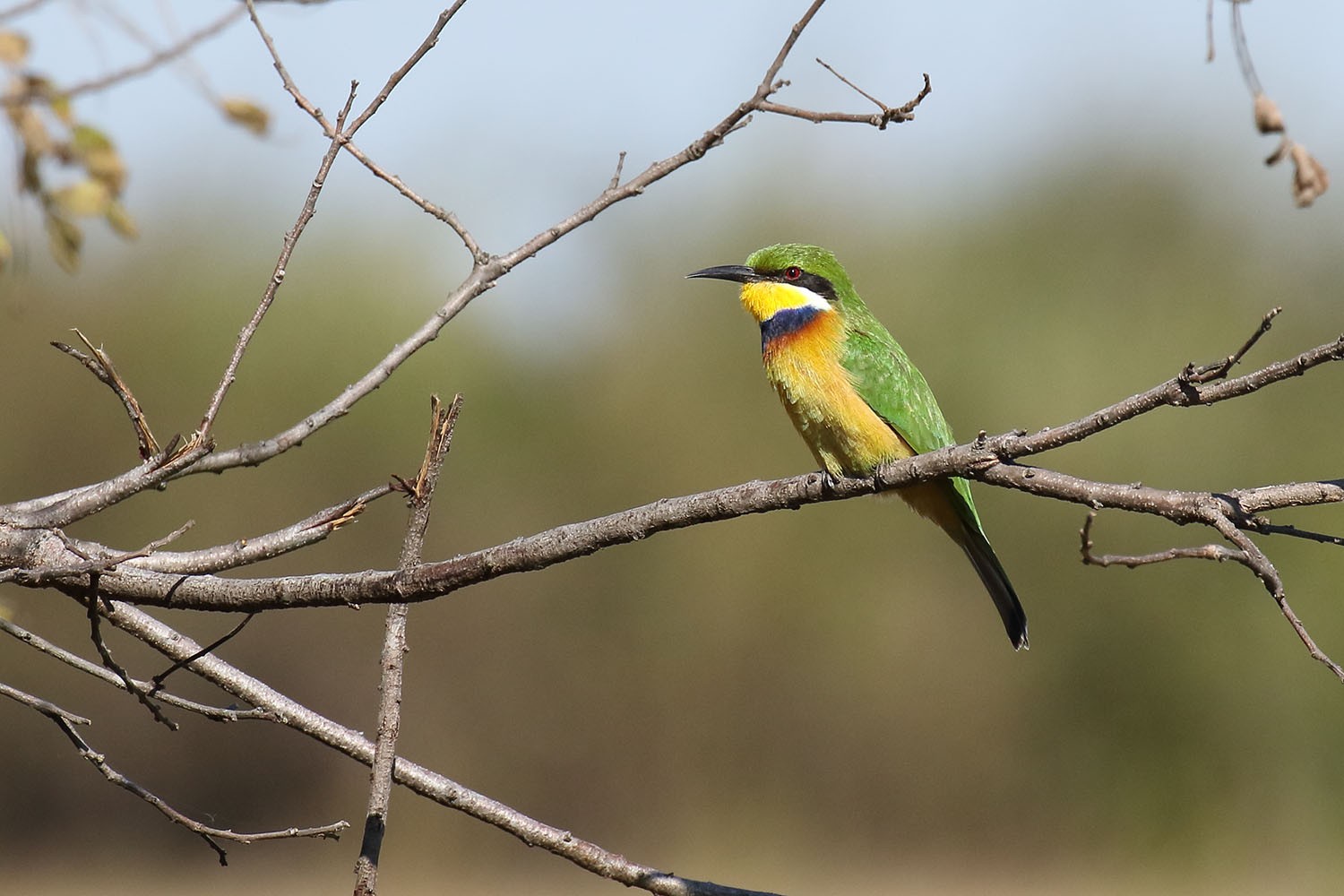Blue-breasted Bee-eater
A species of Typical Bee-eaters Scientific name : Merops variegatus Genus : Typical Bee-eaters
Blue-breasted Bee-eater, A species of Typical Bee-eaters
Botanical name: Merops variegatus
Genus: Typical Bee-eaters
Content
Description General Info
 Photo By Fabrice Stoger , used under CC-BY-SA-4.0 /Cropped and compressed from original
Photo By Fabrice Stoger , used under CC-BY-SA-4.0 /Cropped and compressed from original Description
The blue-breasted bee-eater, Merops variegatus, exhibits several physically defining characteristics of the Meropidae. It has a relatively large head, short neck, bright plumage, long curved slim sharp beak and a broad black eyestripe. M. variegatus weights between 20-26 g and measures between 18–21 cm in length. It is primarily a green bird, with a green crown, green upper parts and light greenish-yellow underparts Primary wings are washed with rufous and secondaries are green with black tips. Overall the wings are rounded at the tip compared to the pointed tips of the migratory species in Meropidae. The tail has twelve rectrices, the outer rectrices are washed with rufous and the center feathers are green. The tail has a subterminal black bar and is tipped with white. Furthermore, the tail has a shallow v -shape and is lacking tail-streamers present in other members of the family. The head of the blue-breasted bee-eater can be distinguished from other members of the family by a combination of characteristics. It has a blue stripe over the black eye stripe, an orange-red iris, a white cheek and a bright yellow throat. Furthermore, like many meropids, they have a wide chest band. Its chest band is made up of two colours, a deep purple-blue gorget above a chestnut coloured breastband. Juveniles of the blue-breasted bee-eater have buff flanks and belly. They have a yellow-buff chin that leads to a light green mottled breast. Juveniles also completely lack a chest band. 
Size
21 cm
Nest Placement
Burrow
Feeding Habits
Blue-breasted Bee-eater predominantly consumes a variety of insects, particularly honey bee workers, flower bees, and Halictid bees, supplemented by flies, beetles, bugs, grasshoppers, and butterflies. They forage in pairs from perches, capturing prey mid-air and occasionally diving for small fish.
Habitat
The blue-breasted Bee-eater is commonly found in open wet habitats within broader Central African regions. Their preferred environments include reedy lake shores, papyrus beds, marshes, and grassy hillsides. They inhabit altitudes up to 2,400 meters and thrive in areas with heavy rainfall exceeding 1,000 mm annually. The blue-breasted Bee-eater is sympatric with the Little Bee-eater in certain areas, with the blue-breasted Bee-eater favoring permanently wet places and the latter preferring drier spaces with woody growth.
Dite type
Insectivorous
General Info
Feeding Habits
Bird food type
Distribution Area
Blue breasted bee-eaters are found in many central African countries such as Angola, Zambia, Tanzania, Uganda, the Democratic Republic of the Congo, Nigeria and Cameroon. Within these countries the blue-breasted bee-eaters are found in a variety of habitats, ranging from reedy lake shores to the savanna grass lands bordering the Congo basin. They have also been recorded in marshes, grassy hillsides and papyrus beds. However, this species is usually associated with open wet habitats. 
Species Status
Not globally threatened.
Scientific Classification
Phylum
Chordates Class
Birds Family
Bee-eaters Genus
Typical Bee-eaters Species
Blue-breasted Bee-eater